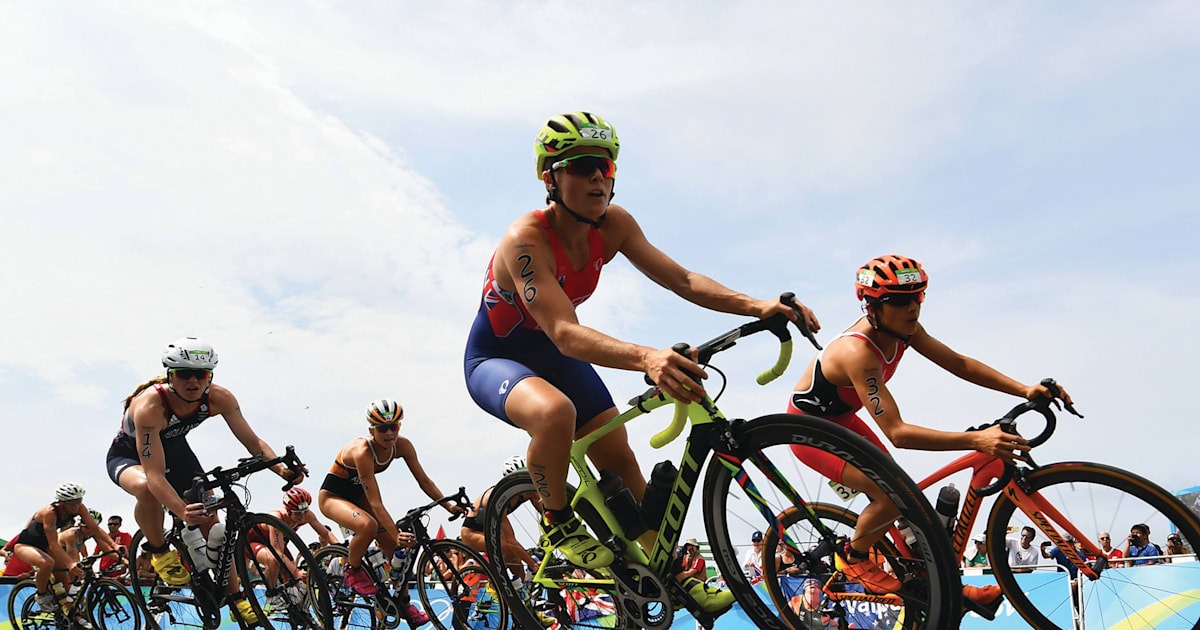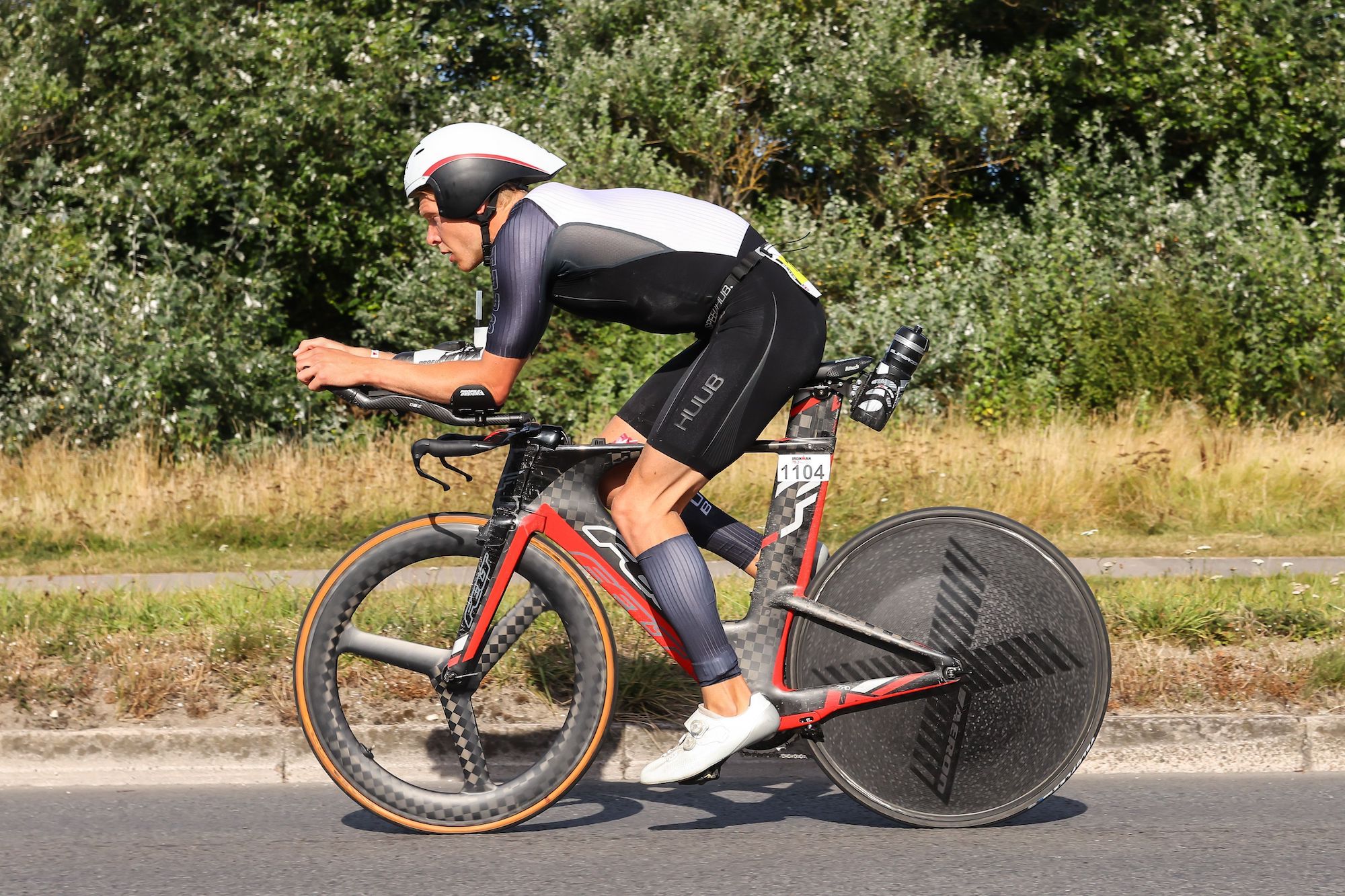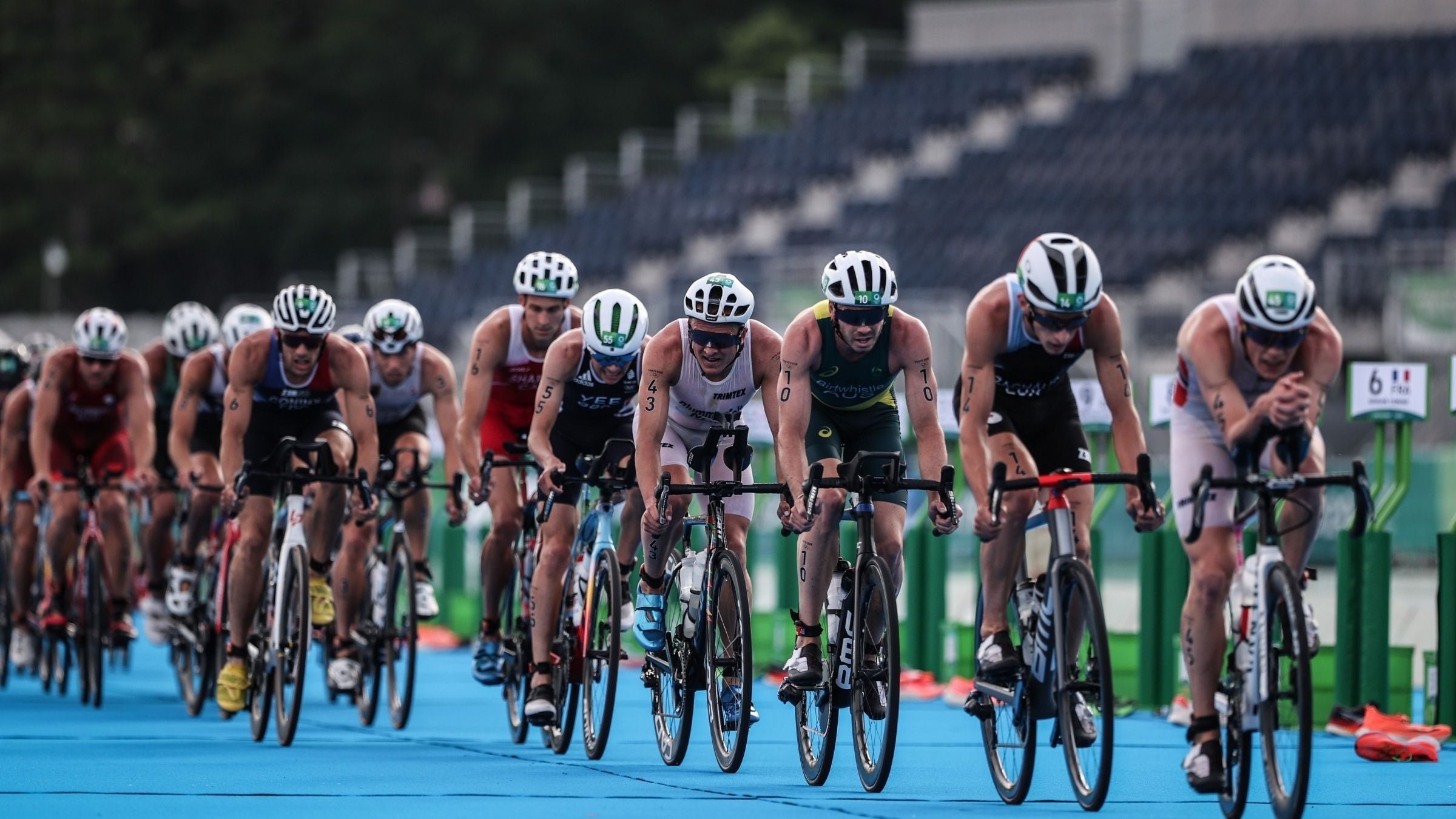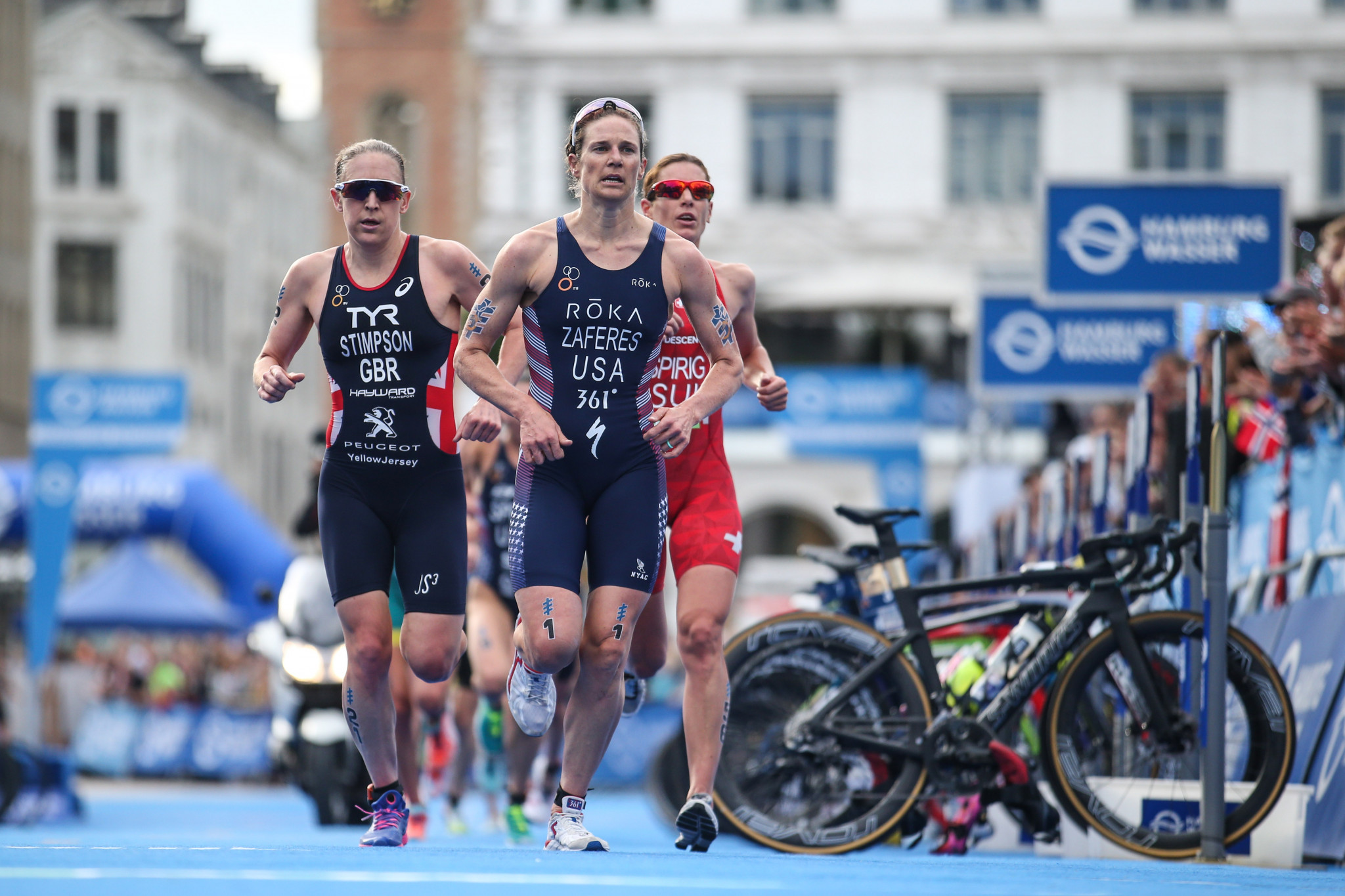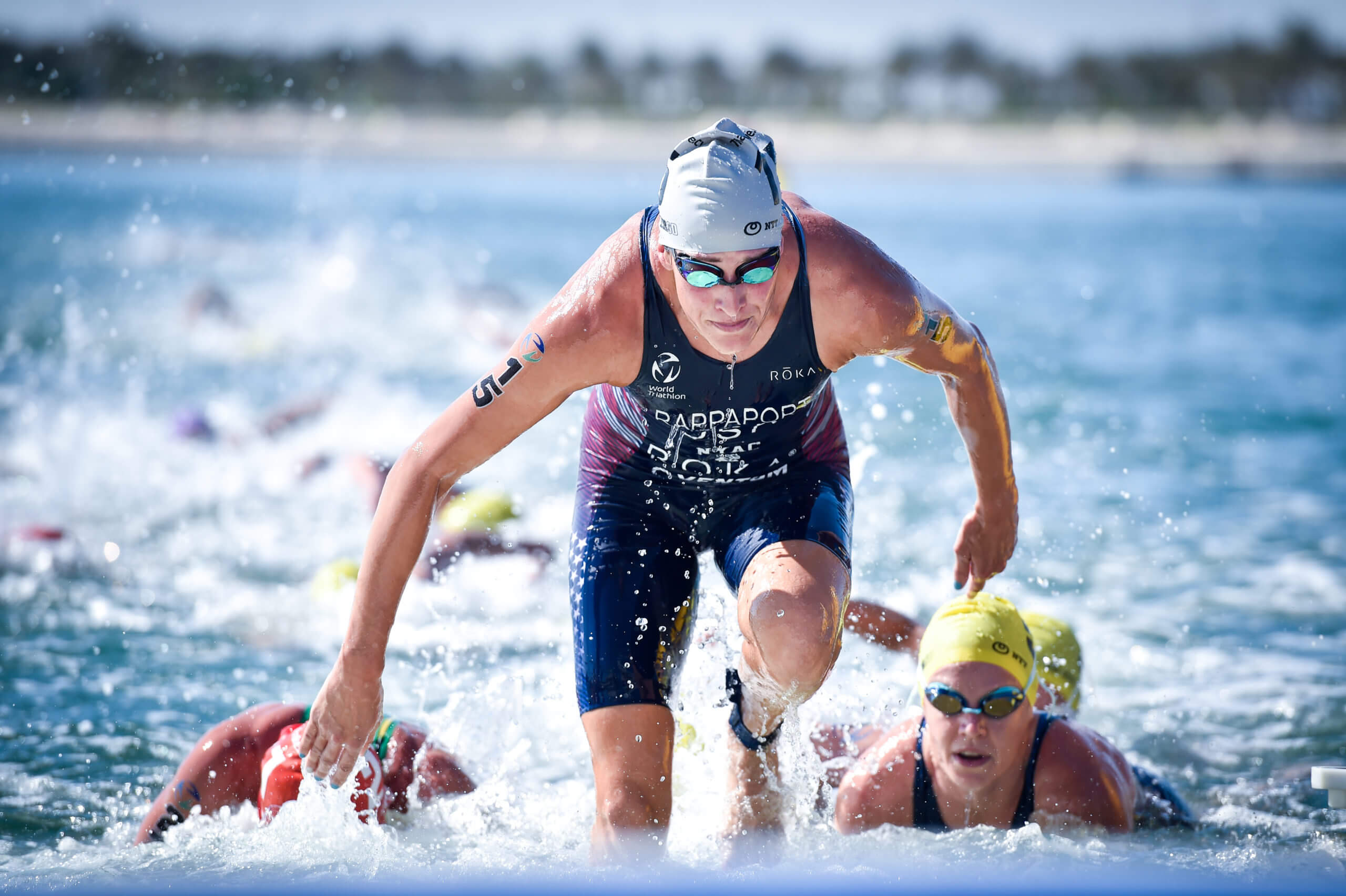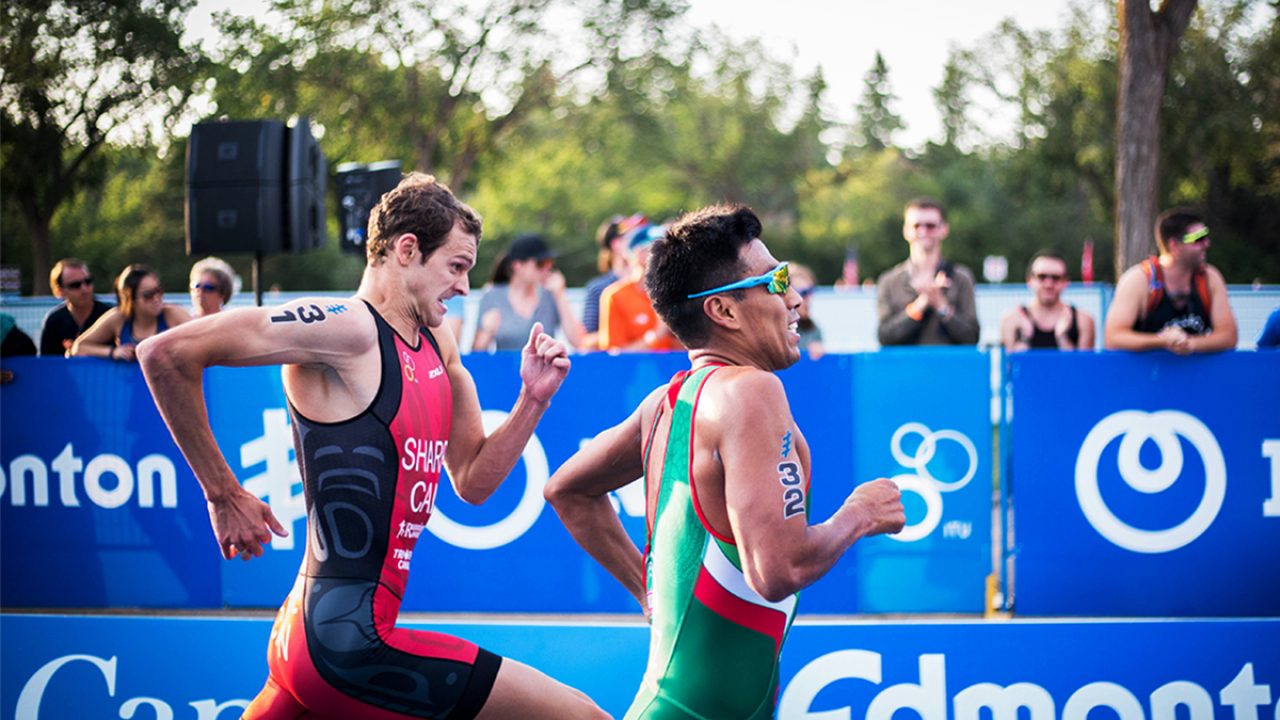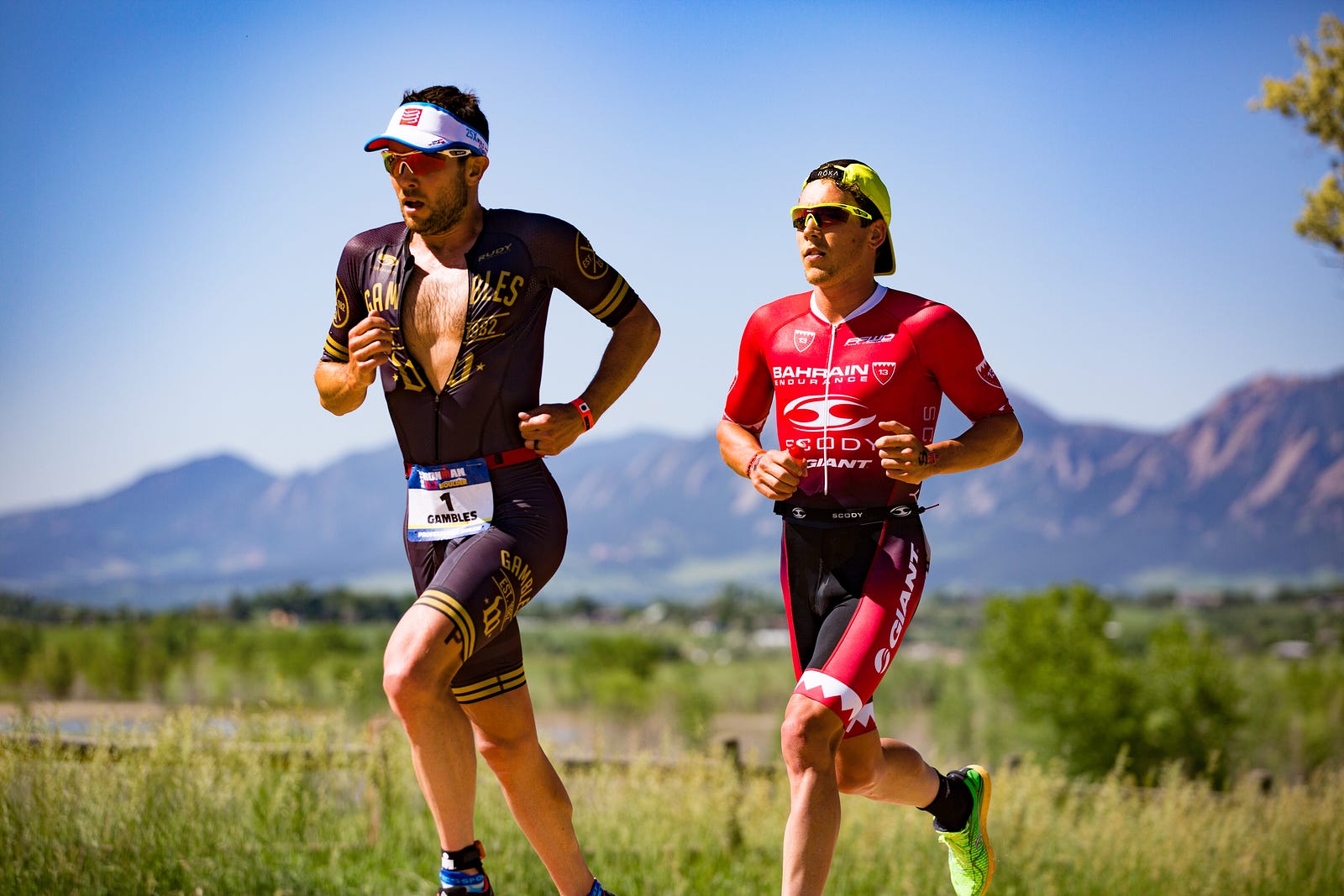Home>Misc>Featured>How Long To Train For An Olympic Triathlon
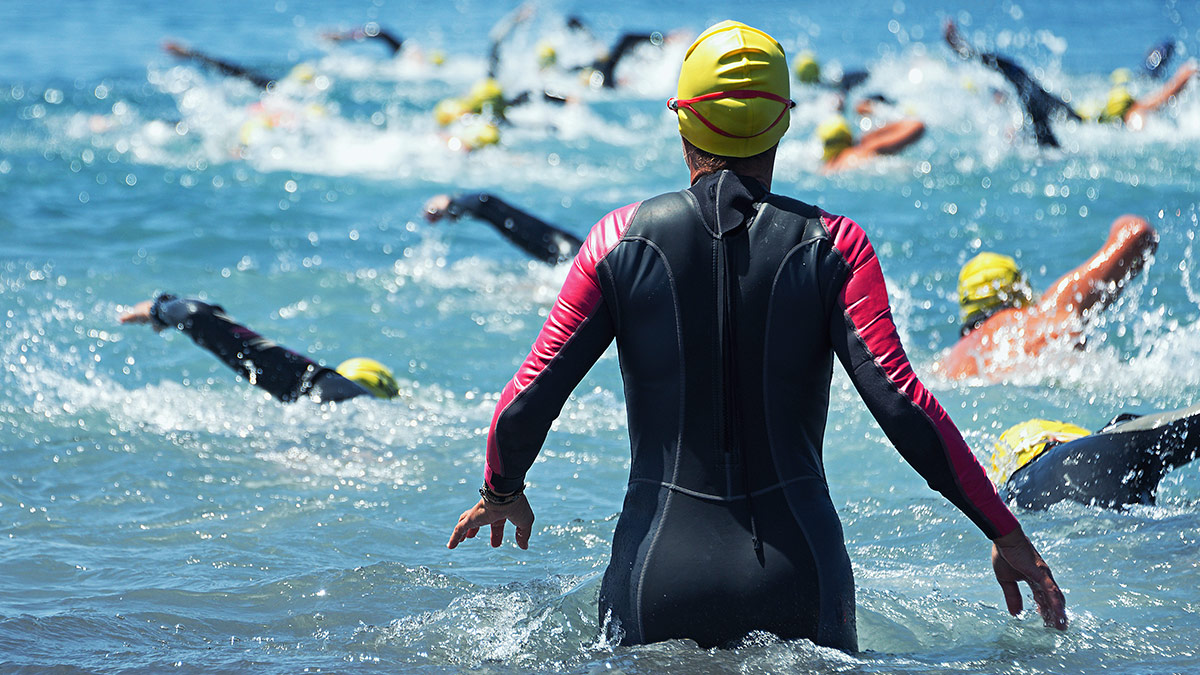

Featured
How Long To Train For An Olympic Triathlon
Modified: January 2, 2024
Discover how long it takes to train for an Olympic triathlon with our featured guide. Achieve your fitness goals and prepare for the ultimate endurance challenge.
Introduction
Welcome to the exhilarating world of Olympic triathlon training! Whether you are a seasoned athlete or a beginner looking for a new challenge, participating in an Olympic triathlon is a remarkable achievement that requires dedication, perseverance, and a solid training plan. In this article, we will explore the various aspects of training for an Olympic triathlon and provide you with valuable insights to help you prepare for the race of a lifetime.
The Olympic triathlon is a multi-disciplinary endurance event that consists of three stages: swimming, cycling, and running. The distances for each stage are typically a 1.5-kilometer swim, followed by a 40-kilometer bike ride, and finishing with a 10-kilometer run. Completing an Olympic triathlon requires a combination of stamina, cardiovascular fitness, muscular strength, and mental resilience.
Regardless of your fitness level or experience, it is crucial to have a well-structured training schedule to optimize your performance and minimize the risk of injury. This article will guide you through the process of creating an effective training plan tailored to your abilities and goals.
Before diving into the details of training, it is essential to assess your current physical fitness and consult with a healthcare professional. This will ensure that you start your training journey on the right foot and minimize the risk of any underlying health issues affecting your progress.
Now, let’s dive into the intricacies of Olympic triathlon training and explore the key factors that will contribute to your success in completing this incredible feat.
Understanding the Olympic Triathlon
Before embarking on your training journey, it is important to have a clear understanding of what the Olympic triathlon entails. The Olympic triathlon is widely recognized as the standard distance for triathlon races and is the same distance featured in the Olympic Games.
The swim portion of the Olympic triathlon typically takes place in open water, such as a lake or the ocean, and involves covering a distance of 1.5 kilometers. Athletes must be proficient in swimming and comfortable navigating through open water currents and potential obstacles.
Following the swim, the cycling portion of the race commences. Participants must complete a 40-kilometer bike ride, which can take place on roads, trails, or a combination of both. Cyclists should be familiar with proper bike handling techniques, including shifting gears, maintaining balance, and adhering to traffic rules and safety precautions.
Once the cycling leg is completed, athletes transition to the final discipline – the run. The run segment of the Olympic triathlon requires participants to complete a 10-kilometer run. This stage tests the athlete’s endurance and mental strength as they push themselves towards the finish line.
It is important to note that the Olympic triathlon is a highly competitive event, attracting athletes from various backgrounds and skill levels. The race duration can vary significantly depending on individual fitness levels, course conditions, and external factors such as weather conditions.
Although the Olympic triathlon demands physical prowess, it is also a thrilling and rewarding experience. Being able to compete alongside fellow athletes and pushing yourself to new limits is an extraordinary achievement that can leave a lasting impact on both your physical and mental well-being.
Now that you have a solid foundation of understanding about the Olympic triathlon, let’s delve into the specifics of training.
Setting a Training Schedule
Creating a well-structured training schedule is essential for preparing your body and mind for the rigorous demands of the Olympic triathlon. It provides a roadmap to gradually build your fitness, improve your skills, and prevent burnout or overtraining.
When setting your training schedule, consider the following factors:
- Time commitment: Determine how much time you can realistically devote to training each week. Be sure to account for other commitments, such as work, family, and social activities.
- Progressive overload: Gradually increase the volume and intensity of your training to challenge your body and promote adaptation. Strive for a balance between pushing your limits and allowing for adequate rest and recovery.
- Periodization: Divide your training schedule into distinct phases, such as base building, strength and speed development, and tapering. Each phase serves a specific purpose in optimizing your performance and minimizing the risk of injury.
- Specificity: Tailor your training sessions to mimic the demands of the Olympic triathlon. Include swim, bike, and run sessions in your schedule to improve your skills and build endurance in each discipline.
Consider seeking guidance from a certified triathlon coach or training professional to help you create a personalized training plan that aligns with your goals and abilities. They can provide expertise, advice, and accountability throughout your training journey.
Additionally, listen to your body and be flexible with your training schedule. Pay attention to any signs of fatigue, excessive soreness, or injury. It is crucial to prioritize rest and recovery to prevent overtraining and maintain your overall well-being.
Remember, consistency is key when it comes to training for the Olympic triathlon. Stick to your schedule as much as possible, but be forgiving if life throws unexpected challenges your way. Adapt and make adjustments when needed, while still maintaining your commitment to training.
With a well-planned training schedule in place, you are setting yourself up for success on your journey to conquer the Olympic triathlon. Now, let’s explore the various aspects of training that will help you enhance your endurance, speed, and technique.
Building Endurance
Endurance is a key component of successful Olympic triathlon performance. To tackle the demanding distances of the swim, bike, and run, you need to develop the stamina to sustain a steady pace throughout the race. Here are some strategies to help you build endurance:
- Long-distance training: Incorporate regular long-distance workouts into your training schedule. Gradually increase the duration of your swim, bike, and run sessions to build your body’s aerobic capacity. Start with shorter distances and gradually work your way up to the race distance to avoid overexertion and injury.
- Consistent training: Consistency is key when it comes to building endurance. Aim to train regularly and consistently without long gaps between workouts. This will help your body adapt and improve its efficiency in utilizing oxygen and energy.
- Interval training: Integrate interval training into your routine. This involves alternating between high-intensity bursts and periods of recovery. For example, during a running session, include short sprints followed by a slower jog to improve your cardiovascular fitness and enhance your endurance levels.
- Progressive overload: Gradually increase the volume and intensity of your workouts, challenging your body to adapt and improve. Aim to push your limits a little further each week by adding an extra lap to your swim, increasing the distance of your bike ride, or extending the duration of your run.
- Cross-training: Engage in cross-training activities such as swimming, cycling, and running to diversify your workouts and reduce the risk of overuse injuries. Incorporating activities like yoga, Pilates, or strength training can also help build overall strength and endurance.
Remember to listen to your body and avoid overtraining. Allow for adequate rest and recovery between workouts to allow your muscles to repair and strengthen. Quality sleep, a balanced diet, and proper hydration are also crucial for optimizing your endurance-building efforts.
Building endurance takes time and patience. Be sure to track your progress and celebrate small milestones along the way. By consistently challenging yourself and gradually increasing the demands on your body, you will develop the endurance necessary to conquer the Olympic triathlon.
Now that you have a solid foundation of endurance, let’s explore strategies to improve your speed and technique in the next section.
Improving Speed and Technique
In addition to endurance, speed and technique play crucial roles in excelling in the Olympic triathlon. Enhancing your speed can help you achieve better race times, while improving your technique can maximize your efficiency and minimize energy expenditure. Here are some tips to help you improve both:
- Interval training: Incorporate speed work into your training routine by including interval training sessions. These sessions involve short bursts of high-intensity effort followed by recovery periods. For example, during a swim, alternate between sprinting for a specific distance or time and then swimming at a moderate pace.
- Form and technique drills: Work on your swim, bike, and run technique by incorporating specific drills that target key areas of improvement. This might involve practicing proper breathing techniques while swimming, working on pedal stroke efficiency during cycling, or focusing on running posture and cadence.
- Gradual speed progression: Gradually build up your speed over time to avoid injury or burnout. Start by incorporating shorter bursts of speed into your workouts and gradually increase the intensity and duration as your fitness improves.
- Hill training: Incorporate hill repeats into your cycling and running workouts to improve leg strength and speed. Climbing hills will challenge your muscles and cardiovascular system, helping you develop the power needed for faster race times.
- Brick workouts: Train yourself to transition smoothly from one discipline to another by incorporating brick workouts into your training plan. These workouts involve combining two disciplines back-to-back, such as a bike ride immediately followed by a run. This will help your body adapt to transitioning from one sport to the next, improving your overall race performance.
In addition to these strategies, it is essential to seek feedback and guidance from experienced coaches or trainers who can provide insights into your technique and offer specific recommendations for improvement.
Remember to focus on quality over quantity in your training. While it is important to push yourself, be mindful of maintaining proper form and technique to prevent injuries and ensure efficient movement.
Improving speed and technique takes time and consistent effort. Be patient with yourself and celebrate small victories along the way. By incorporating these strategies into your training regimen, you’ll be on your way to enhancing your performance in the Olympic triathlon.
Next, we will explore the importance of strength training and cross-training to further enhance your triathlon performance.
Strength Training and Cross-Training
In addition to endurance, speed, and technique, incorporating strength training and cross-training into your Olympic triathlon training plan can greatly enhance your overall performance and reduce the risk of injury. Let’s explore the benefits and strategies for incorporating these elements into your routine:
Strength training:
Strength training plays a vital role in improving your power, efficiency, and resilience. It helps develop the necessary muscular strength and stability required for each discipline of the triathlon. Here are some key points to consider:
- Focus on compound exercises: Include exercises that target multiple muscle groups simultaneously, such as squats, lunges, deadlifts, and push-ups. These exercises mimic the functional movements involved in swimming, cycling, and running, and improve overall body strength.
- Work on core stability: A strong core improves your posture, balance, and overall performance. Incorporate exercises like planks, Russian twists, and bridge variations to strengthen your core muscles.
- Don’t neglect upper body strength: While the focus of the Olympic triathlon is on lower body endurance, having adequate upper body strength is still important for efficient swimming and overall body balance. Include exercises like pull-ups, rows, and shoulder presses to strengthen your arms, back, and shoulders.
- Gradually increase resistance: Start with lighter weights and gradually increase the resistance as your strength improves. Aim for a challenging yet manageable load to promote muscle growth and avoid overexertion.
Cross-training:
Cross-training involves participating in different sports or activities that complement the primary disciplines of swimming, cycling, and running. Here’s why cross-training is beneficial:
- Reduce the risk of overuse injuries: By engaging in different activities, you can give specific muscles and joints a break from the repetitive movements associated with triathlon training.
- Improve overall fitness: Cross-training activities like yoga, Pilates, or HIIT workouts can help improve flexibility, agility, and cardiovascular fitness.
- Mental and physical rejuvenation: Switching up your workouts with cross-training activities can help prevent boredom and keep your motivation high. It also allows for active recovery, promoting mental and physical well-being.
When incorporating strength training and cross-training into your Olympic triathlon training plan, be sure to strike a balance between these activities and the primary triathlon disciplines. Consider working with a qualified trainer or coach who can guide you in designing a well-rounded program that complements your triathlon training goals.
Now that you understand the importance of strength training and cross-training, let’s dive into the crucial aspect of nutrition and hydration for optimal performance.
Nutrition and Hydration
Nutrition and hydration play a fundamental role in supporting your training and optimizing performance in the Olympic triathlon. Proper fueling and hydration strategies can enhance your endurance, speed up recovery, and improve overall race-day performance. Here’s what you need to know:
Eat a balanced diet:
Focus on consuming a balanced diet that includes a variety of whole, nutrient-dense foods to provide your body with the necessary fuel and nutrients. Here are some key points to consider:
- Carbohydrates for energy: Prioritize complex carbohydrates such as whole grains, fruits, and vegetables to provide sustained energy for your training sessions and race day.
- Protein for muscle repair and growth: Include lean sources of protein such as chicken, fish, tofu, and legumes to aid in muscle recovery and growth.
- Healthy fats for energy and recovery: Incorporate sources of healthy fats like avocados, nuts, and olive oil to provide a steady source of energy and support overall bodily functions.
- Adequate hydration: Drink plenty of water throughout the day to stay hydrated. During exercise, aim to consume fluids that contain electrolytes to replenish what is lost through sweat.
Timing your meals:
Strategically time your meals and snacks to support your training and optimize performance:
- Pre-workout fuel: Eat a balanced meal or snack containing carbohydrates and a small amount of protein about 1-2 hours before your training sessions to provide your body with the necessary fuel.
- Post-workout recovery: Consume a meal or snack containing carbohydrates and protein within 30-60 minutes after your training sessions to replenish glycogen stores and aid in muscle recovery.
- Race-day nutrition: Develop a race-day nutrition plan that includes easily digestible carbohydrates and electrolyte-rich fluids to fuel your body throughout the event.
Listen to your body:
Each individual is different, so pay attention to how your body responds to different types of food, hydration, and timing. Experiment during your training to determine what works best for you and make adjustments accordingly.
Consulting with a registered dietitian who specializes in sports nutrition can provide personalized guidance and help you fine-tune your nutrition and hydration plan.
Remember, nutrition and hydration are not just important on race day but should be a consistent focus throughout your training journey. By properly fueling your body, you can optimize your performance and enhance your overall triathlon experience.
Next, we will explore the importance of injury prevention and recovery in Olympic triathlon training.
Injury Prevention and Recovery
Injury prevention and recovery are essential aspects of Olympic triathlon training. By implementing strategies to prevent injuries and promoting effective recovery, you can maintain consistency in your training and optimize your performance. Here are some key considerations:
Proper warm-up and cool-down:
Prior to each training session, dedicate time to warm up your muscles and prepare your body for the upcoming workout. Include dynamic stretches and exercises that target the specific muscles and movements involved in your training. After training, cool down with static stretches to increase flexibility and reduce muscle soreness.
Cross-training:
Incorporating cross-training activities helps reduce the risk of overuse injuries. By engaging in activities such as swimming, cycling, or strength training, you can give specific muscles used in running a break without sacrificing overall fitness.
Listen to your body:
Pay attention to any signs of pain, discomfort, or fatigue. Pushing through pain can lead to more significant injuries. If you experience persistent pain or discomfort, consult with a healthcare professional to diagnose and address the issue promptly.
Proper rest and recovery:
Allow your body adequate time to rest and recover between training sessions. Incorporate rest days into your training schedule to prevent overtraining and promote muscle repair.
Physical therapy and massage:
Consider incorporating regular sessions with a physical therapist or sports massage therapist. These professionals can address any muscle imbalances, provide targeted treatment for specific injuries, and help optimize your biomechanics.
Proper nutrition and hydration:
Ensure you are fueling your body with a balanced diet and staying hydrated. Proper nutrition and hydration support muscle recovery, reduce the risk of injury, and optimize overall performance.
Monitoring training load:
Keep track of your training volume and intensity to avoid sudden spikes or excessive workload. Gradually increase your training load to allow your body to adapt and minimize the risk of injuries.
Quality sleep:
Getting enough quality sleep is crucial for recovery. Aim for 7-8 hours of uninterrupted sleep every night to support muscle repair, hormone regulation, and mental well-being.
Remember that prevention is better than cure when it comes to injuries. Prioritizing injury prevention strategies and implementing effective recovery techniques will help you stay healthy, consistent, and perform at your best in the Olympic triathlon.
Now, let’s explore the importance of mental preparation in achieving success in the Olympic triathlon.
Mental Preparation
Mental preparedness is just as crucial as physical training when it comes to achieving success in the Olympic triathlon. The right mindset can help you push through challenges, stay focused, and perform at your best on race day. Here are some strategies for mental preparation:
- Goal setting: Set clear, realistic goals for your triathlon journey. Whether it’s completing the race within a specific time frame or achieving a personal best, having tangible targets can provide motivation and focus.
- Visualization: Use visualization techniques to mentally rehearse the race. Close your eyes and imagine yourself swimming, cycling, and running with confidence and ease. Visualize crossing the finish line, feeling triumphant and proud.
- Positive self-talk: Develop a positive internal dialogue. Replace self-doubt and negative thoughts with optimistic and encouraging statements. Remind yourself of your strengths, progress, and the effort you have put into your training.
- Mindfulness and relaxation: Incorporate mindfulness exercises into your routine to improve focus and reduce anxiety. Practice deep breathing, meditation, or yoga to calm your mind and find mental clarity.
- Stress management: Develop effective stress management strategies to cope with pre-race nerves or unexpected challenges. This might include techniques such as journaling, talking to a supportive friend or coach, or engaging in activities that help you relax and unwind.
- Flexibility and adaptability: Mental resilience is key during the race as unforeseen circumstances may arise. Be prepared to adapt to changing conditions and maintain a positive mindset even when things don’t go as planned.
- Learn from setbacks: View setbacks or less-than-ideal performances as opportunities for growth. By learning from your experiences, you can adjust your training, develop new strategies, and improve for future races.
- Stay present: Focus on the present moment rather than dwelling on past mistakes or worrying about the future. Pay attention to your breath, your body, and the sensations you experience during training and the race.
Remember, mental strength and resilience take practice. Incorporate mental preparation techniques into your training routine to develop a strong and confident mindset.
Surround yourself with a supportive community of fellow athletes, friends, and family who can provide encouragement, share experiences, and help boost your confidence.
By cultivating a positive mindset and implementing mental preparation strategies, you can harness the power of your mind to conquer the Olympic triathlon and achieve your goals.
Now, armed with a comprehensive understanding of training for the Olympic triathlon, you are well-equipped to embark on your remarkable journey. Embrace the challenges, stay disciplined, and enjoy every step along the way. Good luck!
Conclusion
Congratulations! You have now gained a comprehensive understanding of what it takes to train for the Olympic triathlon. By following the guidance provided in this article, you can embark on a journey that will challenge both your physical and mental capacities.
Remember to start by setting a well-structured training schedule that fits your lifestyle and goals. Focus on building endurance through long-distance training, interval sessions, and progressive overload. Enhance your speed and technique by incorporating interval training, form drills, and hill workouts.
Don’t forget the importance of strength training and cross-training to strengthen key muscle groups and reduce the risk of injury. Proper nutrition and hydration are essential for fueling your body and optimizing performance. Prioritize injury prevention and recovery strategies, such as warm-ups, rest, and listening to your body.
Equally important is mental preparation, including goal setting, visualization, positive self-talk, and stress management. Cultivating a strong and resilient mindset will propel you towards success in the Olympic triathlon.
As you embark on this incredible journey, always remember that progress takes time and dedication. Be patient with yourself and celebrate your achievements along the way. Seek guidance from professionals, connect with fellow triathletes, and enjoy the process.
Now it’s time to lace up your running shoes, hop on your bike, and dive into the water. Take on the challenge of the Olympic triathlon with passion, determination, and a sense of adventure. Good luck, and may your training lead to an unforgettable race day experience!

